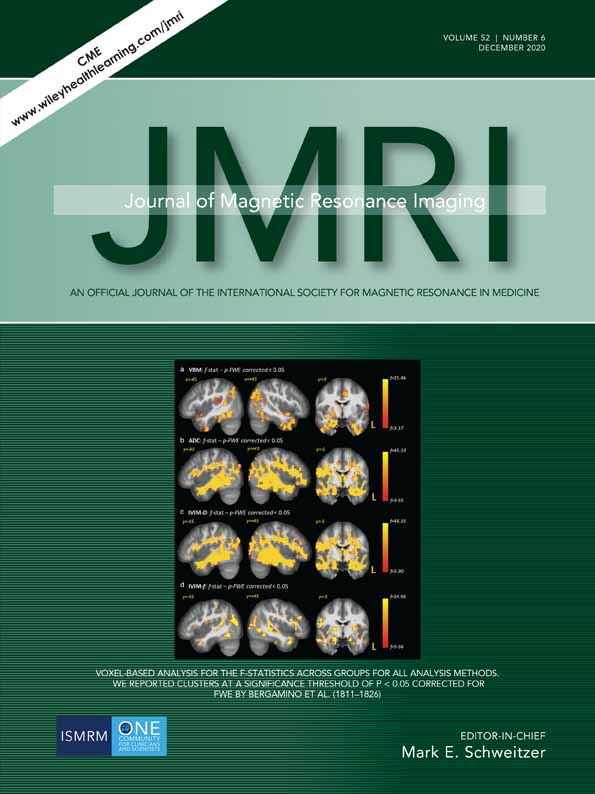MRI-Based Radiomics Signature: A Potential Biomarker for Identifying Glypican 3-Positive Hepatocellular Carcinoma
Abstract
Background
Glypican 3 (GPC3) expression has proved to be a critical risk factor related to prognosis in hepatocellular carcinoma (HCC) patients.
Purpose
To investigate the performance of MRI-based radiomics signature in identifying GPC3-positive HCC.
Study Type
Retrospective.
Population
An initial cohort of 293 patients with pathologically confirmed HCC was involved in this study, and patients were randomly divided into training (195) and validation (98) cohorts.
Field Strength/Sequences
Contrast-enhanced T1-weight MRI was performed with a 1.5T scanner.
Assessment
A total of 853 radiomic features were extracted from the volume imaging. Univariate analysis and Fisher scoring were utilized for feature reduction. Subsequently, forward stepwise feature selection and radiomics signature building were performed based on a support vector machine (SVM). Incorporating independent risk factors, a combined nomogram was developed by multivariable logistic regression modeling.
Statistical Tests
The predictive performance of the nomogram was calculated using the area under the receive operating characteristic curve (AUC). Decision curve analysis (DCA) was applied to estimate the clinical usefulness.
Results
The radiomics signature consisting of 10 selected features achieved good prediction efficacy (training cohort: AUC = 0.879, validation cohort: AUC = 0.871). Additionally, the combined nomogram integrating independent clinical risk factor α-fetoprotein (AFP) and radiomics signature showed improved calibration and prominent predictive performance with AUCs of 0.926 and 0.914 in the training and validation cohorts, respectively.
Data Conclusion
The proposed MR-based radiomics signature is strongly related to GPC3-positive. The combined nomogram incorporating AFP and radiomics signature may provide an effective tool for noninvasive and individualized prediction of GPC3-positive in patients with HCC. J. MAGN. RESON. IMAGING 2020;52:1679–1687.




